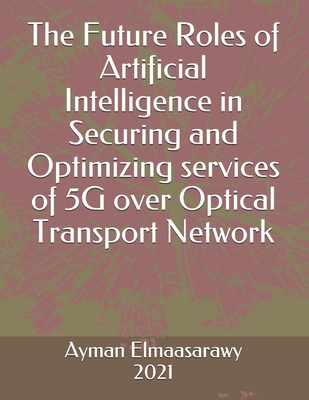You are here
Back to topThe Future Roles of Artificial Intelligence in Securing and Optimizing services of 5G over Optical Transport Network (Paperback)
$28.74
Usually Ships in 1-5 Days
(This item cannot be returned.)
(This item cannot be returned.)
Description
Today and shortly, the demands to transfer a tremendous mass of data among the various applications in many fields inside the country become an exclusive responsibility particularly with the significant developments of the clouding policies in the different forms such the data centers and the implementations of many smart applications of the 5G in the various areas of the information technologies. The current design of the core communication network consists of 3 independent zones, the 1'st zone is layer 1 and layer 2 which recognized as the physical layer of the core optical network such Optical Transport Network (OTN), the 2'nd band is layer 3 which viewed as IP core network, and the last zone is the access and the application layers such 4G network. The challenge in the current communication model is no associations among these 3 zones of the communication network to optimize the capacities and the needed resources which are required to carry the data among any of them. Now the optical transport network (OTN) represents the critical point of carrying a tremendous amount of data for the mobile network such 4G between the different sites according to the requirements of the users of the mobile operators 1]. The construction of the optical transport network (OTN) in our case is a case study of a long distances optical network, the study consists of multiple domains of transmission equipment's from different vendors, and joined with each other's by thousands of kilometers from the optical fiber cables, at the same time 1 or 2 separate domains cover each region inside the country from the long-distance OTN with the same or another vendor types. The problem in this traditional structure of the long-distance optical transport network is the average quality of the service's resilience and the challenge to reuse the free bandwidths on a particular optical area domain. This technique in the structure of the optical network converted it to several isolated domains of the optical network with chaotic merging between the legacy layers such as the synchronize digital hierarchy (SDH) and the new generation layers as the OTN equipment.Furthermore, the routing among the various OTN regions demands more hand-operated and hardware orders to achieve it, which is not decent, while any failure in the core OTN with the significant obligations to restore the affected services. The new generations of the communication markets for the next 3 years will include the clouding thoughts in the several fields of the communication markets, and will increase in the implementations of much smart applicability following the employing of the 5G technologies around the world, all of these enormous progress in the communication markets in the near future will need extraordinary requirements in the infrastructure of the core optical network, which depends mainly on the performance, the latency, the available bandwidth, the dynamically of the recovery of the service from specific paths to others, the switching rate and other parameters in the OTN and the security of the traffic over the optical network 2].The structure of the communication network between the different operators, which is built-in isolated zones between accesses network, IP core network, and the optical system makes the cost the operations is very high, which affects the quality of the service in the 4G network. By suggesting the associations between the software-defined network (SDN), the machine learning technology (ML), and the conventional network management systems (NMS's) of the OTN the transformation of the existing determined OTN to be more dynamic and automated, this will be done by employing only one centralized controller (CC) to manage the OTN in the multiple vendors' fields, several layers and in the domains of the various regions.
